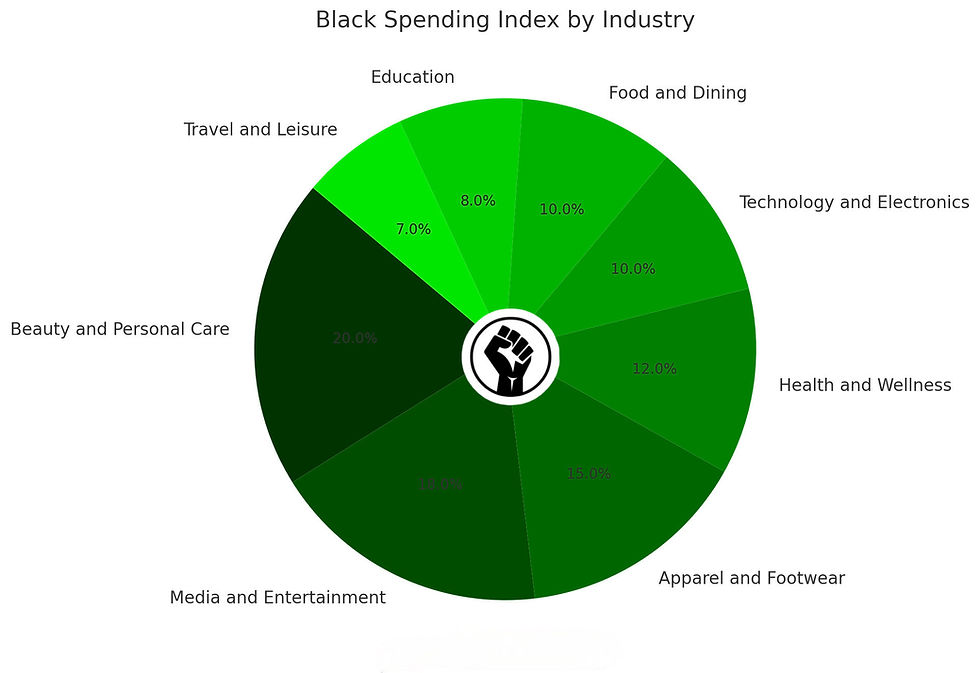The Unforeseen Landscape of Mergers and Buyouts in 2024 and 2025
- Al Lloyd

- Aug 6
- 5 min read
https://youtu.be/WJD9rc3RLWY?si=htQAzbS7zs4CzbEGhttps://youtu.be/WJD9rc3RLWY?si=htQAzbS7zs4CzbEG (Video Version)
As we approach 2024 and 2025, the landscape of mergers and buyouts is on the brink of significant change. Driven by global economic shifts, cutting-edge technology, and evolving consumer preferences, companies are preparing for strategic moves that will redefine their roles in the market. By understanding these developments, stakeholders can better anticipate trends and uncover investment opportunities.
Mergers and acquisitions (M&A) are inherently unpredictable. Yet, certain factors are compelling companies to consider mergers or acquisitions. This blog post examines key trends, potential outcomes, and essential strategies surrounding M&A in 2024 and 2025.
Emerging Sectors of Interest
Recent years have seen rapid changes across various sectors, specifically in technology, healthcare, renewable energy, and consumer goods. Each of these sectors holds unique growth opportunities through targeted mergers and acquisitions.
The technology sector stands at the forefront of the M&A landscape. Large tech firms are increasingly acquiring innovative startups to enhance their capabilities. For instance, in 2022 alone, over 1,600 acquisitions were made in the tech industry, with firms focusing on artificial intelligence, cybersecurity, and cloud solutions. As organizations become more reliant on digital tools, the need for state-of-the-art technology will continue to spur consolidation.
Similarly, the healthcare sector is seeing notable activity. The global telemedicine market has expanded rapidly, with a projected worth of $175 billion by 2026. Companies are acquiring telehealth providers and health tech startups that offer accessible solutions to align with changing consumer expectations around healthcare delivery.
The renewable energy sector is also becoming a hotbed for M&A. As climate change becomes more pressing, companies focused on sustainable energy sources are prime for mergers. A recent report indicates that investments in renewable energy technologies rose by 27% in 2021, showing the long-term potential that investors foresee in this area.
Financial Outlook for M&A Activities
The financial environment for mergers and buyouts is evolving. With fluctuating interest rates and lingering economic uncertainty, companies are reassessing their financial strategies. Organizations with cash reserves and favorable credit conditions have the potential to engage in attractive mergers and acquisitions.
A lower interest rate climate typically encourages companies to pursue M&A as a growth strategy. For example, when interest rates fell below 2% in late 2020, M&A activity surged by over 50% in 2021 compared to the previous year. However, if rates increase, businesses may adopt a cautious approach, requiring substantial financial justification for mergers.
Investors are increasingly focused on the financial health of potential targets. Companies with sustainable financial performance and strong revenue growth are more likely to attract interest in the M&A arena.
Regulatory Climate and Its Impact
Regulatory scrutiny regarding mergers and acquisitions is a critical factor in strategic planning. In 2023, we witnessed heightened interventions from regulatory bodies addressing antitrust and consumer protection concerns. This trend is expected to continue into 2024 and 2025, affecting how companies navigate potential M&A activities.
To remain compliant, businesses must actively consult with legal experts to understand how changing regulations may influence their mergers. For instance, as antitrust laws aim to preserve competitive markets, acquisitions in already concentrated industries could face significant restrictions.
Additionally, compliance with environmental standards is gaining importance. Companies increasingly committed to sustainability may face stricter scrutiny regarding mergers, especially in sectors sensitive to environmental impacts.
Cultural Integration and Human Resources
Beyond financial and regulatory factors, cultural integration is a crucial aspect of successful mergers. Companies must recognize differing organizational cultures and work to create alignment post-merger. A clash of cultures can lead to low employee morale, decreased productivity, and talent loss.
Establishing a solid communication plan that addresses employee concerns before and after a merger is essential. For example, a company that recently merged announced its vision and team integration plans through open forums, resulting in a 30% increase in employee satisfaction scores within the first year post-merger.
Human resources play a vital role in this transition by ensuring talent retention and promoting a shared vision among employees from both organizations.
Strategic Examples of Potential Mergers
Looking ahead, speculations about possible mergers are prominent. Major players in various industries are frequently mentioned as potential targets or acquirers.
Tech Giants and Startups: Industry leaders like Google or Microsoft may seek to acquire innovative startups focusing on AI or machine learning to boost their technological capabilities.
Healthcare Collaborations: Mergers between hospitals and tech companies could transform healthcare delivery through enhanced telehealth services and improved patient management systems.
Energy Sector Consolidation: Traditional energy providers might merge with renewable energy startups to diversify their portfolios and align with global sustainability goals.
Technological Advancements as Catalysts
Technology will act as a key driver for mergers and acquisitions. Developments in automation, machine learning, and data analytics create new opportunities for companies to expand and innovate through acquisitions.
For example, eCommerce companies might acquire logistics technology firms to improve their supply chain efficiency. Since 2020, online shopping has increased by over 40%, making solid logistics essential for maintaining competitiveness.
Moreover, as remote work becomes commonplace, companies in telecommunications and work management software may merge with firms offering innovative solutions tailored for a distributed workforce.
Market Predictions and Trends
Experts predict a strong rebound in M&A activities for 2024 and 2025 as businesses regain confidence in their growth strategies. Economic recovery, coupled with increased consumer confidence, is likely to encourage firms to actively explore strategic partnerships.
Furthermore, collaboration will become central to M&A efforts, focusing on value beyond mere financial gains. Mergers that promote research and development can foster innovation, helping companies to stay competitive across their industries.
Investment Considerations for Stakeholders
For investors, understanding the dynamics of mergers and acquisitions is vital for informed decision-making. Keeping track of market trends and sector-specific movements helps identify potential investment opportunities.
A surge in M&A activity generally signifies broader market confidence, potentially leading to increasing share prices and long-term profitability. Investors should also analyze the strategic rationale behind mergers, ensuring they align with industry trends and consumer needs.
Potential Challenges Ahead
Despite the optimistic outlook, several challenges may arise. Geopolitical instability, supply chain disruptions, and shifting consumer preferences can all impact M&A activities.
Companies need to remain agile and responsive to unexpected challenges while assessing potential mergers. Conducting diligent research and thorough market analysis is crucial for any successful M&A strategy.
The Future of Mergers and Buyouts
As we step into 2024 and 2025, the mergers and acquisitions landscape is poised for significant shifts influenced by various external forces and strategic decisions. With ample opportunities for businesses to gain competitive advantages, navigating the complexities of M&A will require a balanced focus on financial strategies, cultural integration, and adherence to regulatory standards.
Stakeholders should stay informed and proactive while exploring opportunities in the M&A space. By anticipating trends and appreciating each sector's unique dynamics, companies can effectively position themselves for successful mergers and acquisitions in an ever-changing market.

With these strategic insights, businesses can not only navigate the complexities of M&A but also seize the opportunities within this dynamic landscape.










Comments